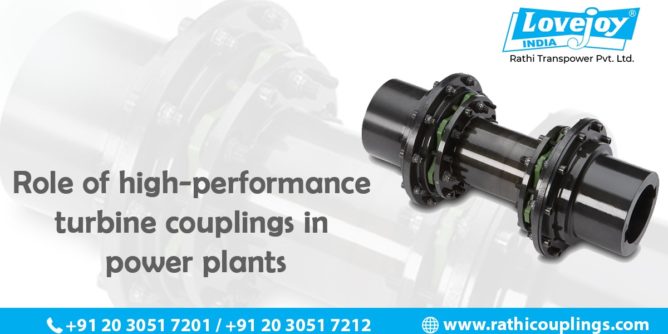
Many times in a day you flip on the switch or push a button with which many appliance and lights come on and go off.
You surely know that electricity that makes all this possible comes from a power plant, and you may also know the process any power plant uses to create electricity.
In any case, you’ve most likely never thought about the components that are required to keep that equipment running.
One such component is an exceptionally designed mechanical power transmission component called a coupling.
Read More: What is Elastomeric Coupling?
Power plants (or power stations) convert coal, oil, petroleum gas, biomass, hydropower, atomic power, wind, wave or solar energy into power utilizing electrical power generators.
In addition to generators, power plants utilize a wide range of kinds of pivoting hardware, including gas turbines, steam turbines, gearboxes, engines,
At any point when an association between two ends of rotating equipment like generator and turbine, Gearbox and motor etc is made, a coupling is utilized.
Couplings are control transmission segments used to associate two shafts together. Primary coupling types incorporate rigid and flexible type of couplings. Flexible couplings and fluid couplings are the kinds of couplings most normally found in power plants.
Flexible couplings are intended to deal with small shaft misalignments and are accessible in many designs for a large group of various applications.
Flexible coupling styles incorporate beam, bellows, chain, diaphragm and jaw. The correct kind depends upon the application and working conditions.
Turbine power plants
One major thing all these power plants share in common is that they require many different types of couplings to connect all their rotating equipment.
Coal is moved to the plant on mass taking care of transports, requiring couplings between the engine, gearbox and conveyor drum pulley shafts.
The coal is then pounded, utilizing extra couplings for the pulveriser drive. Water is
The most basic couplings are between the steam turbine and the generator shafts. Steam turbines drive generators turning at consistent synchronous velocities, most regularly 3,000 cycles for every moment for 50 Hz frameworks and 3,600 cycles for every moment for 60 Hz frameworks.
Read More: Various Applications of Couplings
In addition to these high speeds, these couplings work under extraordinary burdens. Turbine and generator couplings require an uncommonly designed solution for persevering through these conditions while guaranteeing most extreme uptime.
Sudden downtime can take hours or days to resolve and are very expensive.
Hydroelectric power is made by rotating turbines in quick moving water that is connected with electrical power generators.
Similar to the case with steam-turbine control plants, the turbine and generator shafts are associated with one another utilizing uniquely structured couplings. Sometimes, the application requires a custom design in order to meet the demands.
Uptime in such power plants where critical operating parameters which need to be taken care of and requires fault-free operations, Rathi’s high performance Couplings are used.
Rathi Lovejoy who are leading coupling manufacturer with a history of successful implementations with designing and manufacturing high performance turbine couplings delivering great products.
